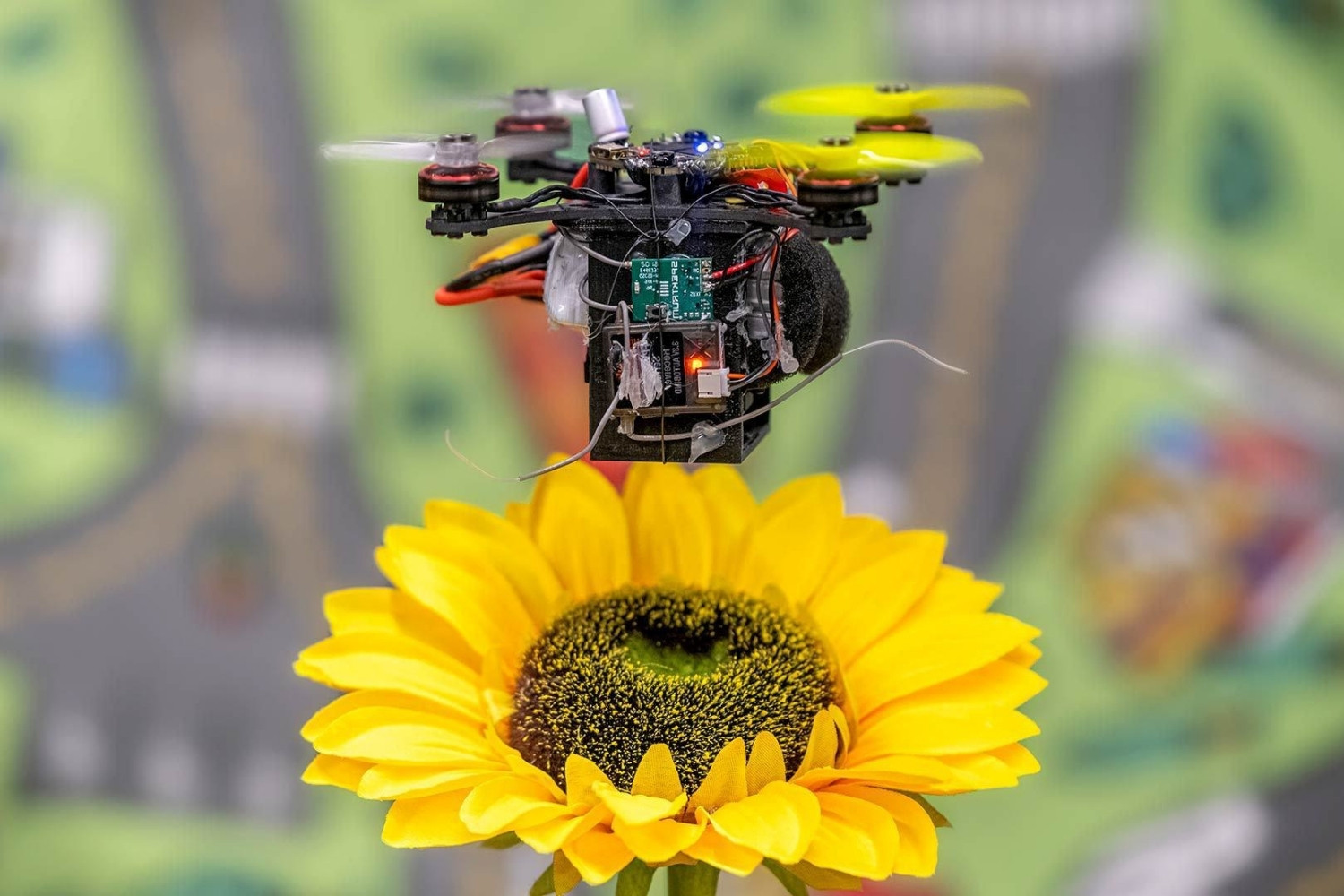
Pollination drones are changing how we think about farming and gardening. These tiny flying robots help plants reproduce by spreading pollen, just like bees. Why are pollination drones important? They can work in bad weather, at night, and in places where bees are scarce. Farmers use them to boost crop yields and ensure food security. Pollination drones also help scientists study plant behavior and genetics. With fewer bees around due to pesticides and habitat loss, these drones offer a high-tech solution. Want to learn more? Here are 36 fascinating facts about these incredible machines.
What Are Pollination Drones?
Pollination drones are innovative devices designed to mimic the role of bees in pollinating plants. These drones are equipped with advanced technology to ensure crops receive the necessary pollination for growth and reproduction.
- Pollination drones use artificial intelligence to navigate fields and identify flowers needing pollination.
- They are equipped with tiny brushes or pollen dispensers to transfer pollen from one flower to another.
- These drones can operate in various weather conditions, unlike bees, which are less active in rain or cold.
- Pollination drones can cover large areas quickly, making them efficient for large-scale farming.
Why Are Pollination Drones Important?
The decline in bee populations has raised concerns about the future of crop pollination. Pollination drones offer a potential solution to this problem.
- Bee populations have decreased by 40% in some regions due to pesticides, habitat loss, and diseases.
- Without bees, 75% of the world's crops would struggle to reproduce.
- Pollination drones can help ensure food security by maintaining crop yields.
- They provide a sustainable alternative to traditional pollination methods.
How Do Pollination Drones Work?
Understanding the mechanics behind these drones can shed light on their effectiveness and potential.
- Pollination drones use GPS technology to navigate fields accurately.
- They are programmed with algorithms that help them identify flowers ready for pollination.
- Drones can be controlled remotely or operate autonomously.
- They use sensors to detect the presence of flowers and assess their pollination needs.
Benefits of Using Pollination Drones
Pollination drones offer several advantages over traditional pollination methods.
- They can operate 24/7, increasing the efficiency of pollination.
- Drones reduce the need for chemical pesticides, which can harm bees and other beneficial insects.
- They can be used in greenhouses and other controlled environments where bees may not thrive.
- Pollination drones can be programmed to target specific crops, ensuring optimal pollination.
Challenges and Limitations
Despite their potential, pollination drones face several challenges that need to be addressed.
- The cost of developing and deploying these drones can be high.
- There are concerns about the environmental impact of using drones on a large scale.
- Pollination drones may not be as effective as bees in some cases.
- The technology is still relatively new, and more research is needed to improve its efficiency.
Future of Pollination Drones
The future of pollination drones looks promising, with ongoing research and development aimed at overcoming current limitations.
- Researchers are working on improving the accuracy of drones in identifying and pollinating flowers.
- There is potential for collaboration between drones and bees to enhance pollination.
- Advances in battery technology could extend the operational time of drones.
- The development of smaller, more agile drones could make them more effective in dense crop fields.
Real-World Applications
Pollination drones are already being used in various agricultural settings, demonstrating their potential.
- In Japan, orchard farmers use drones to pollinate apple and pear trees.
- Greenhouse operators in the Netherlands employ drones to pollinate tomatoes and cucumbers.
- Berry farms in the United States have started using drones to ensure consistent pollination.
- In Israel, drones are used to pollinate almond trees, which require precise pollination.
Environmental Impact
The use of pollination drones can have both positive and negative effects on the environment.
- Drones can help reduce the need for chemical fertilizers and pesticides.
- They can support the growth of organic farming by providing a natural pollination method.
- The production and operation of drones can contribute to carbon emissions.
- There is a risk of disturbing wildlife with the noise and presence of drones.
Technological Innovations
Continuous advancements in technology are enhancing the capabilities of pollination drones.
- Machine learning algorithms are being developed to improve drone efficiency.
- Solar-powered drones are being tested to reduce reliance on traditional batteries.
- Swarm technology allows multiple drones to work together, increasing pollination coverage.
- Biodegradable materials are being explored to make drones more environmentally friendly.
Pollination Drones: The Future of Farming
Pollination drones are changing agriculture. These high-tech helpers can pollinate crops faster and more efficiently than traditional methods. Farmers can now cover larger areas, ensuring better crop yields and healthier plants. This tech reduces the need for chemical pesticides, making farming more eco-friendly. Plus, drones can work in tough weather conditions, giving farmers a reliable tool year-round.
These drones also collect valuable data. They monitor plant health, track growth, and even spot diseases early. This info helps farmers make smarter decisions, saving time and money. As technology advances, drones will become even more essential in farming.
Pollination drones are not just a trend. They represent a significant shift in how we grow food. Embracing this technology means more sustainable and productive farming, benefiting everyone from farmers to consumers. The future of agriculture looks bright with these buzzing helpers.
Was this page helpful?
Our commitment to delivering trustworthy and engaging content is at the heart of what we do. Each fact on our site is contributed by real users like you, bringing a wealth of diverse insights and information. To ensure the highest standards of accuracy and reliability, our dedicated editors meticulously review each submission. This process guarantees that the facts we share are not only fascinating but also credible. Trust in our commitment to quality and authenticity as you explore and learn with us.
